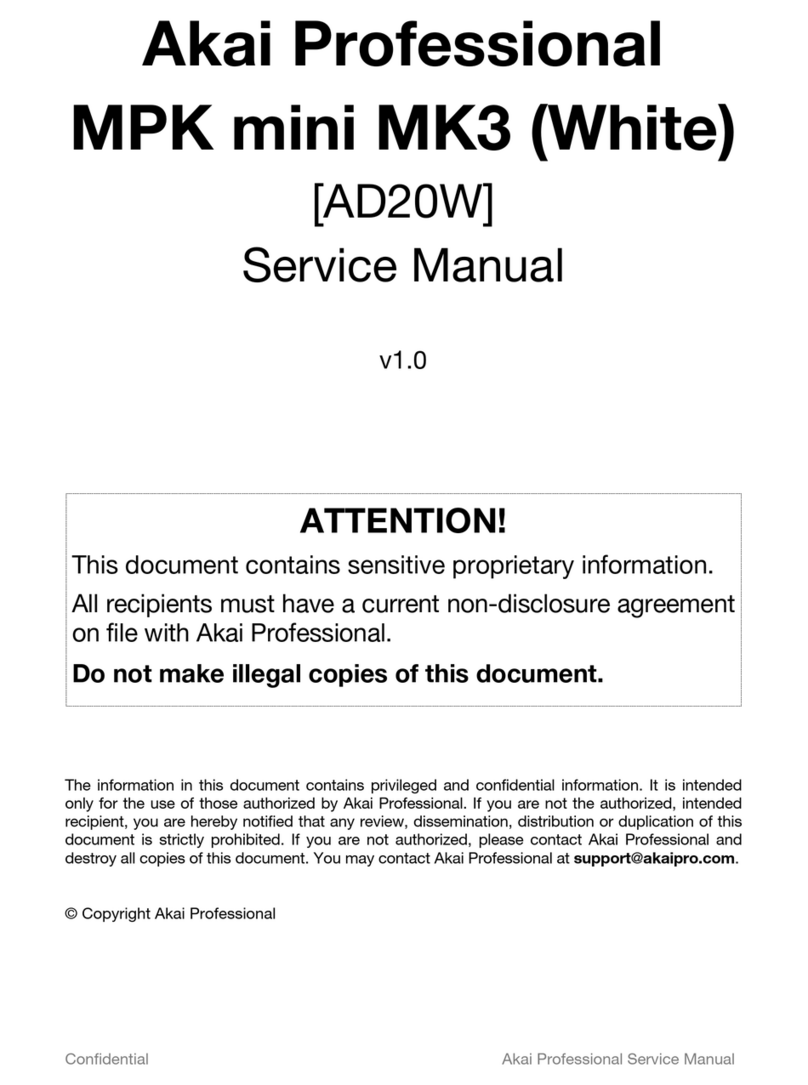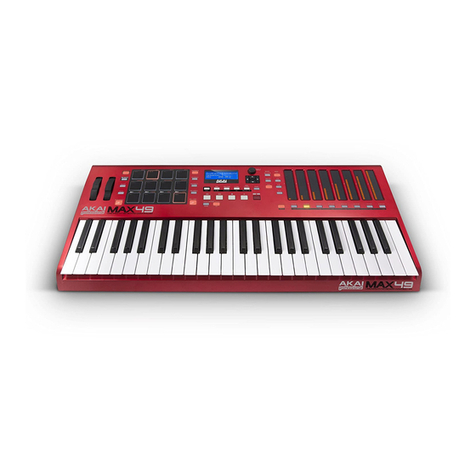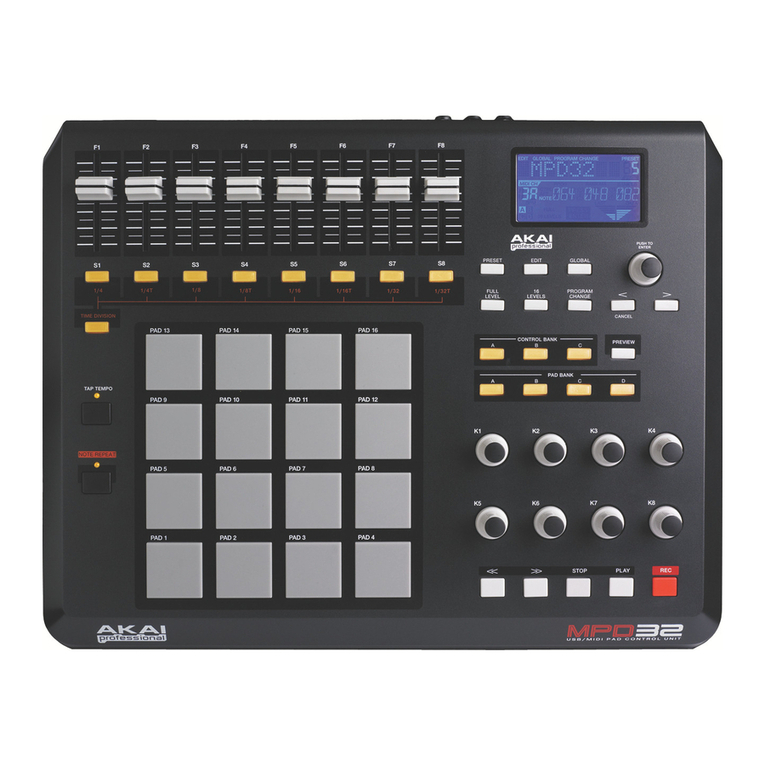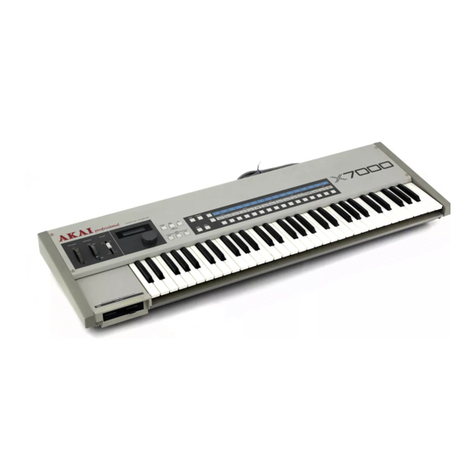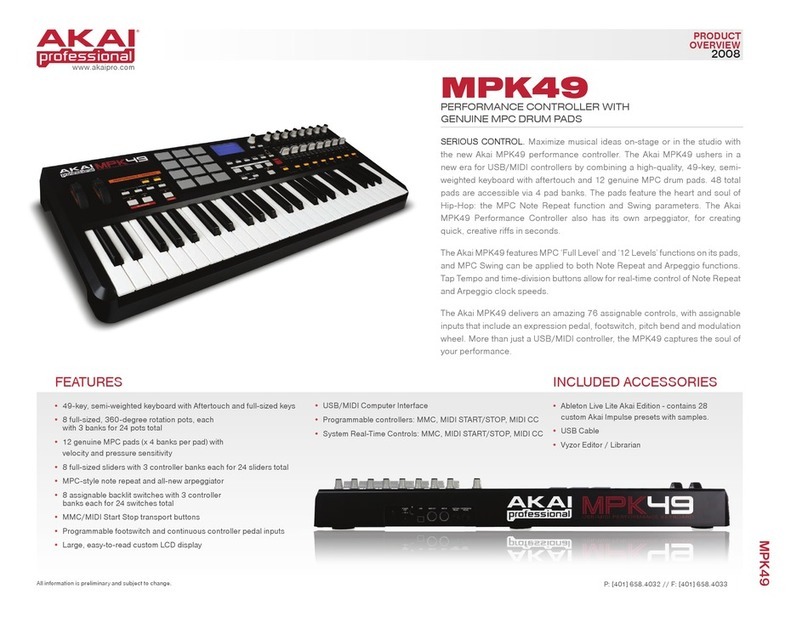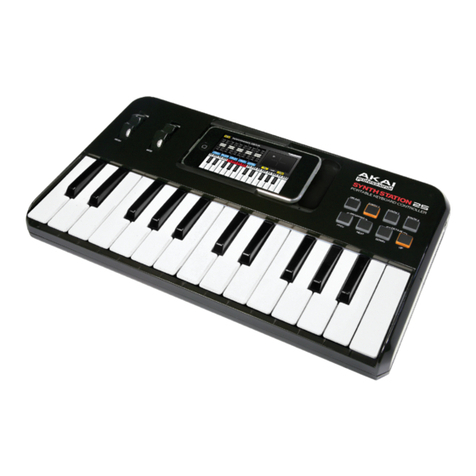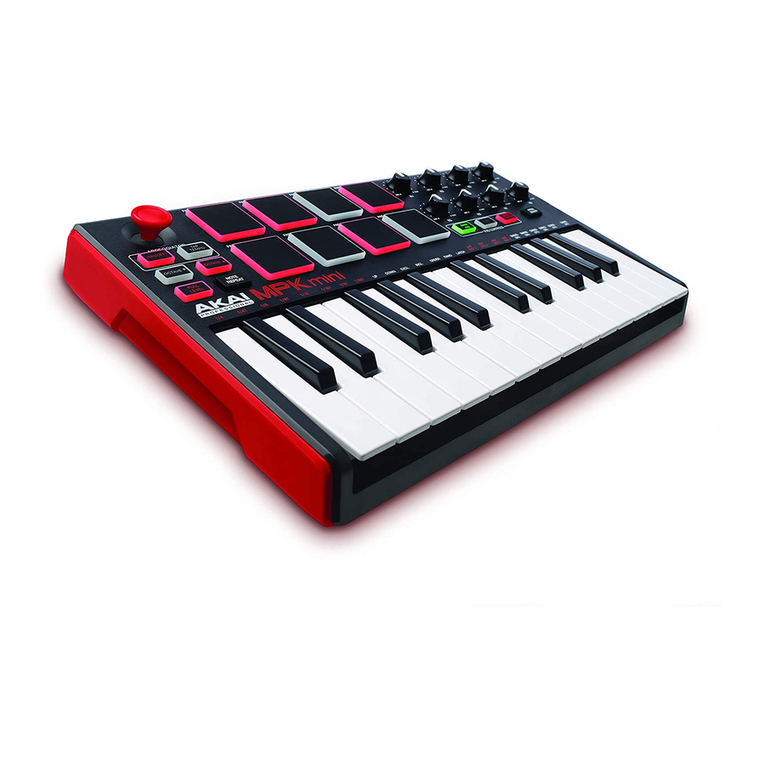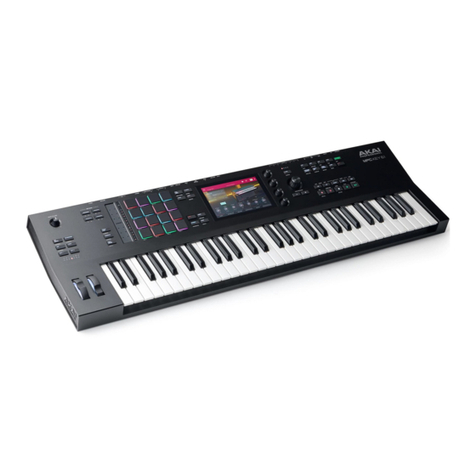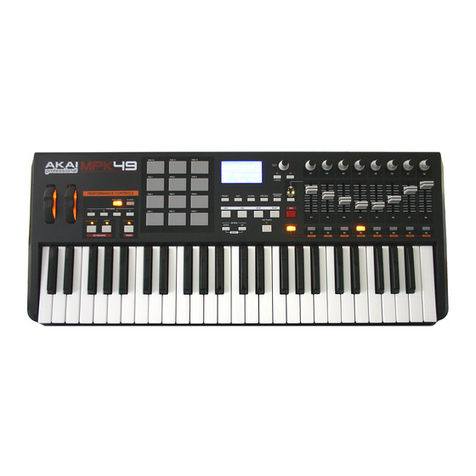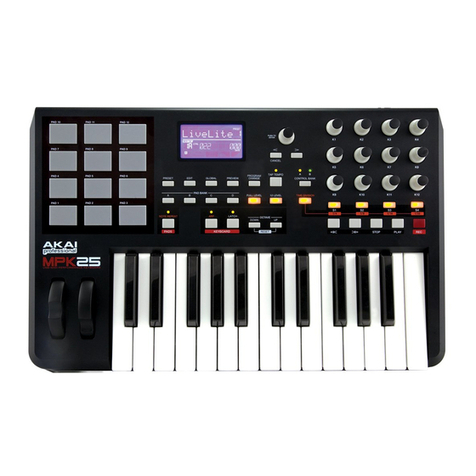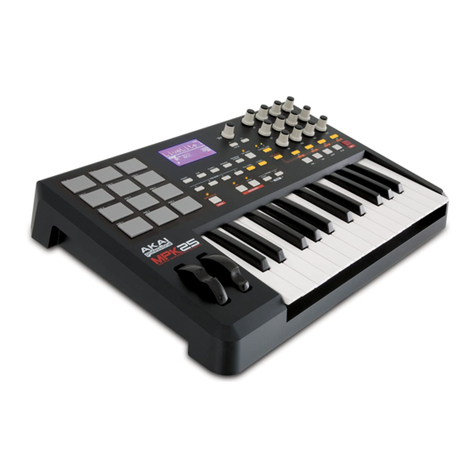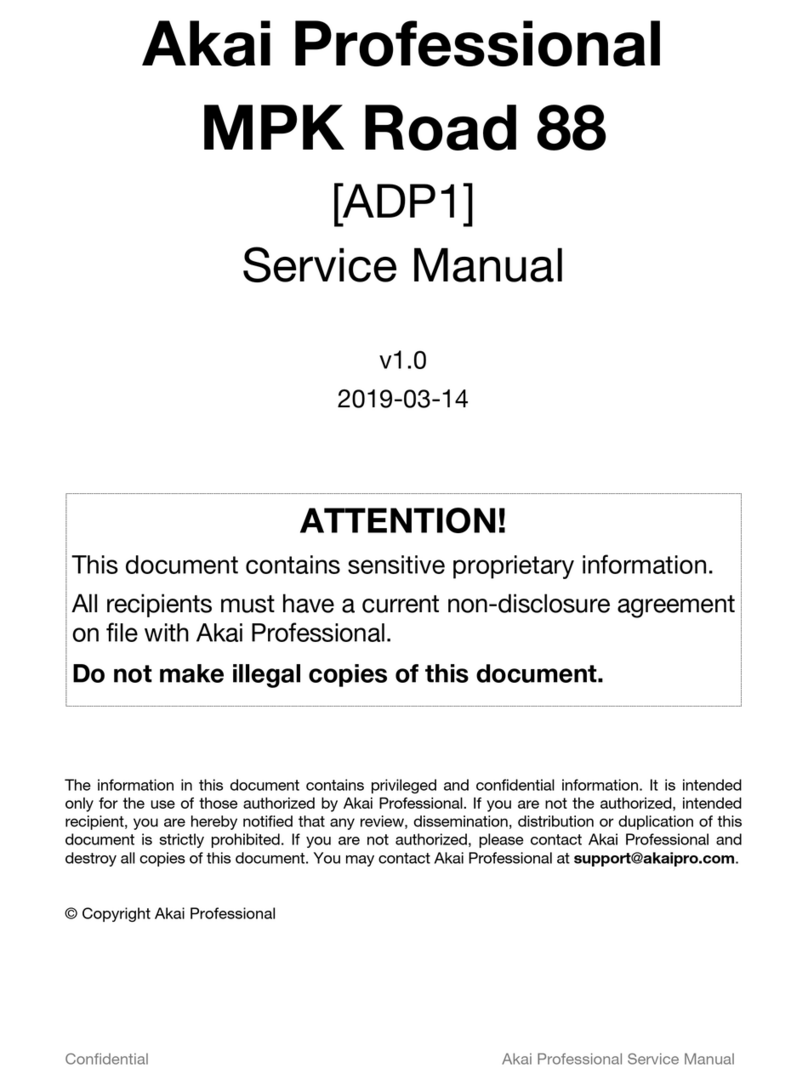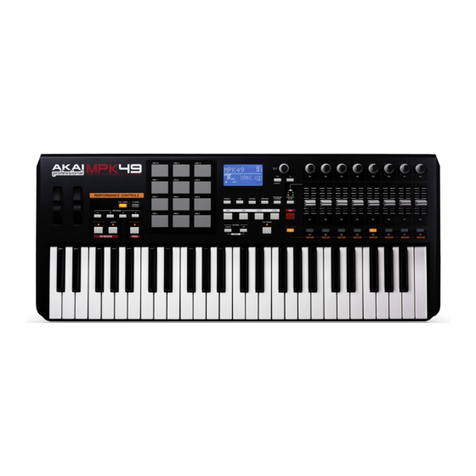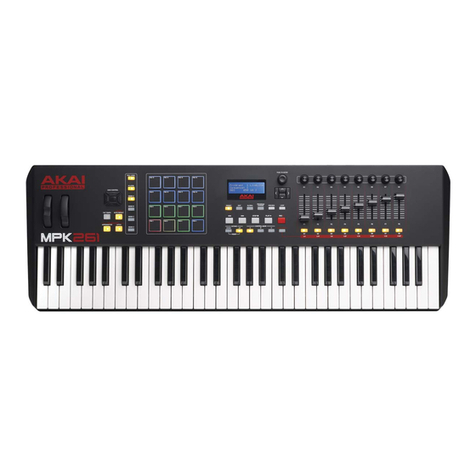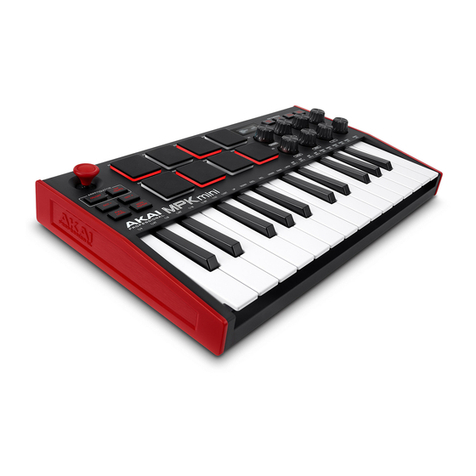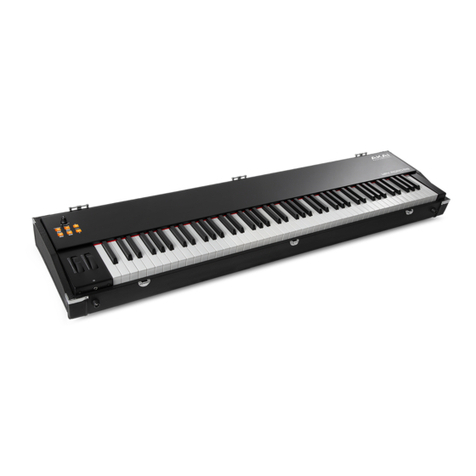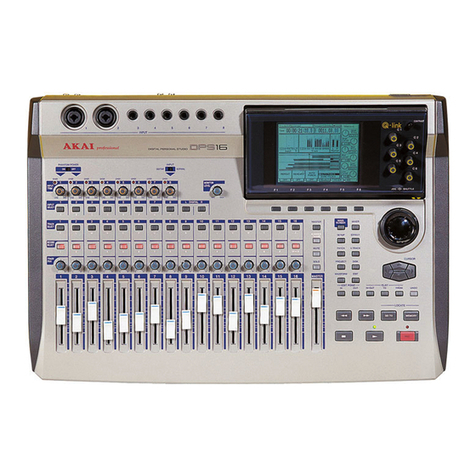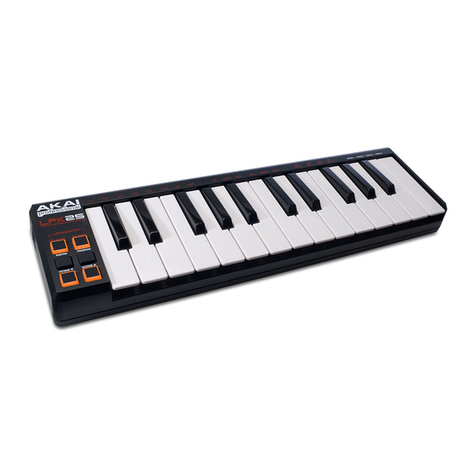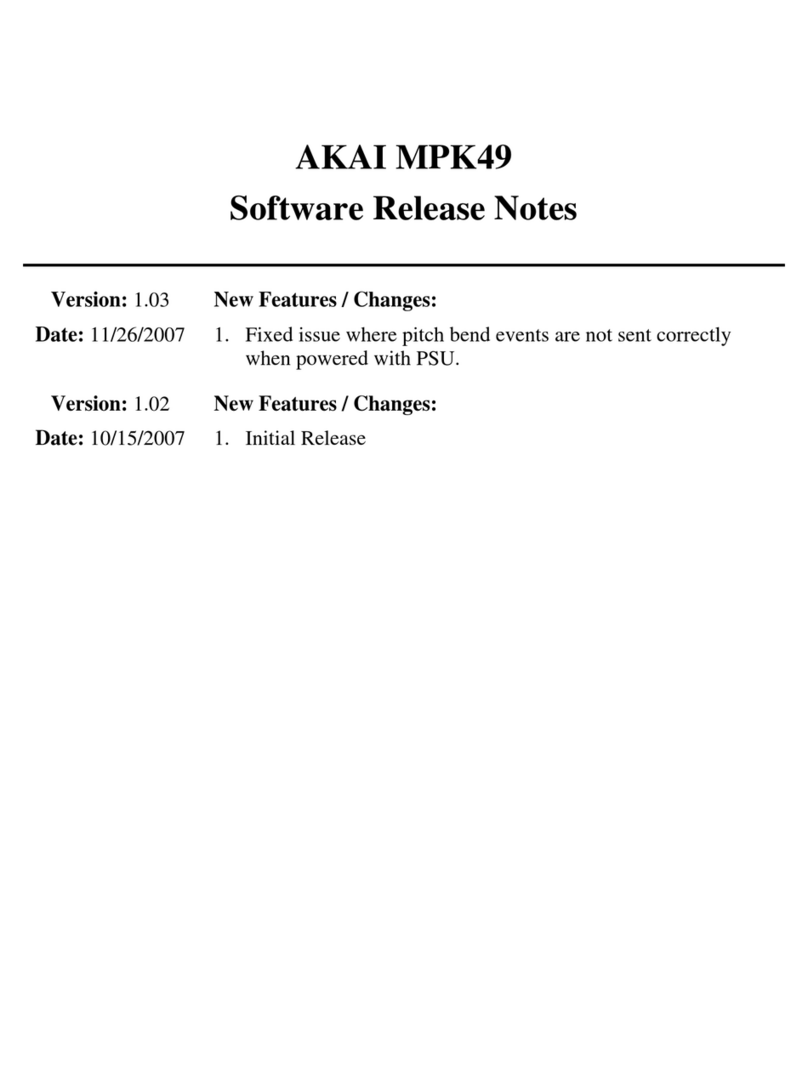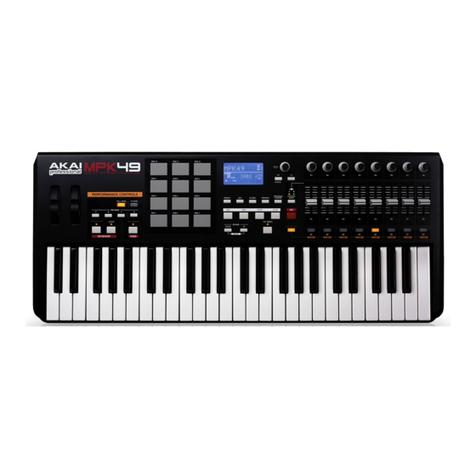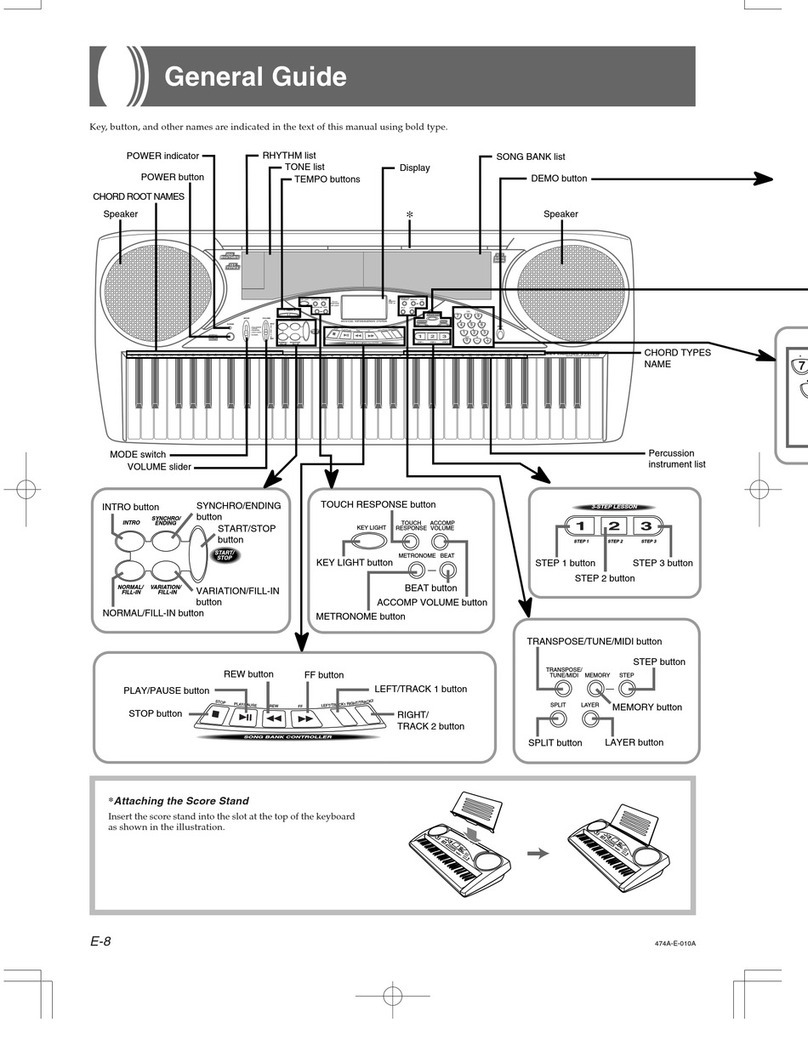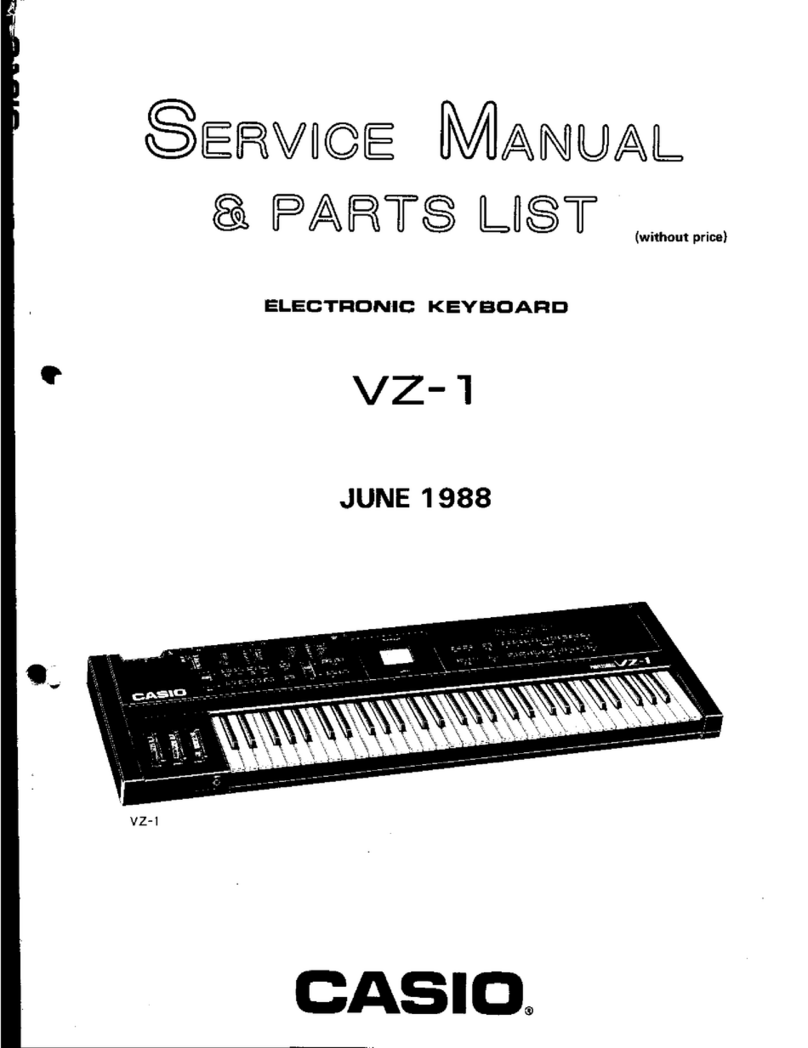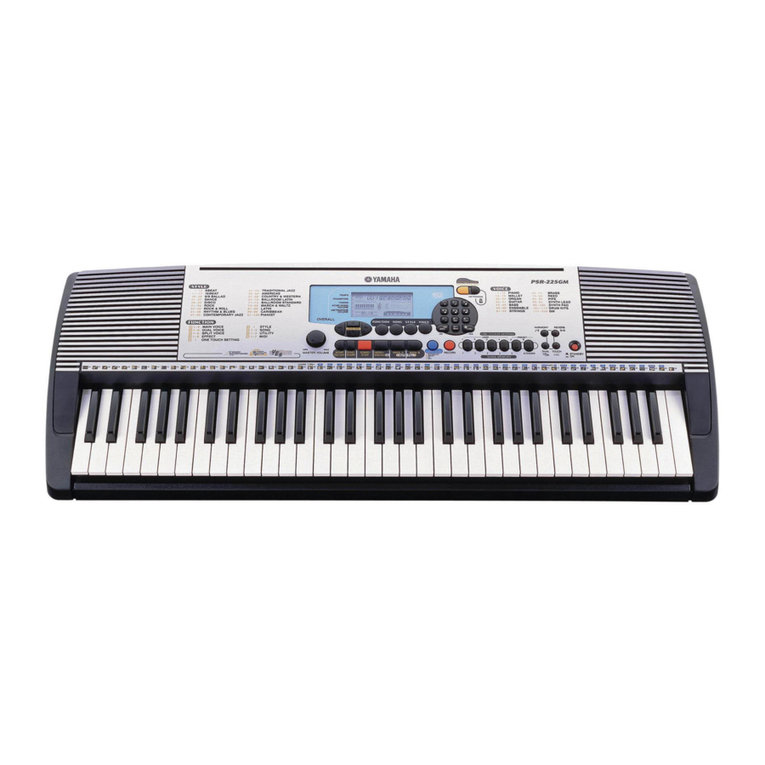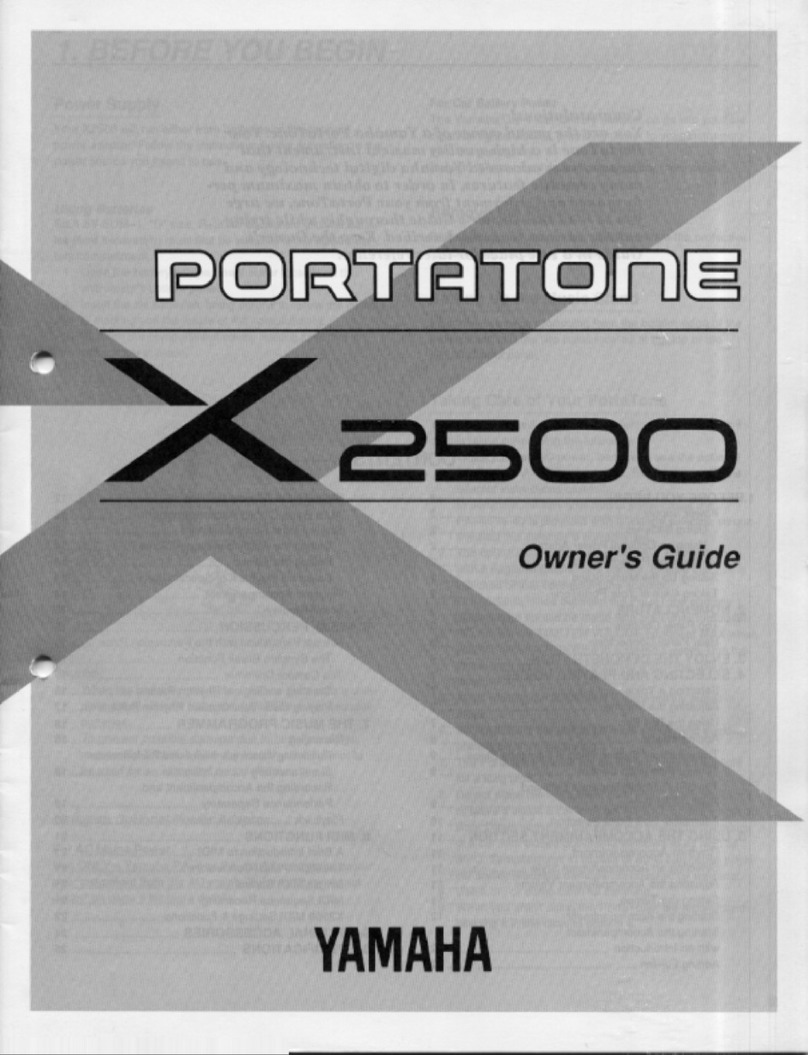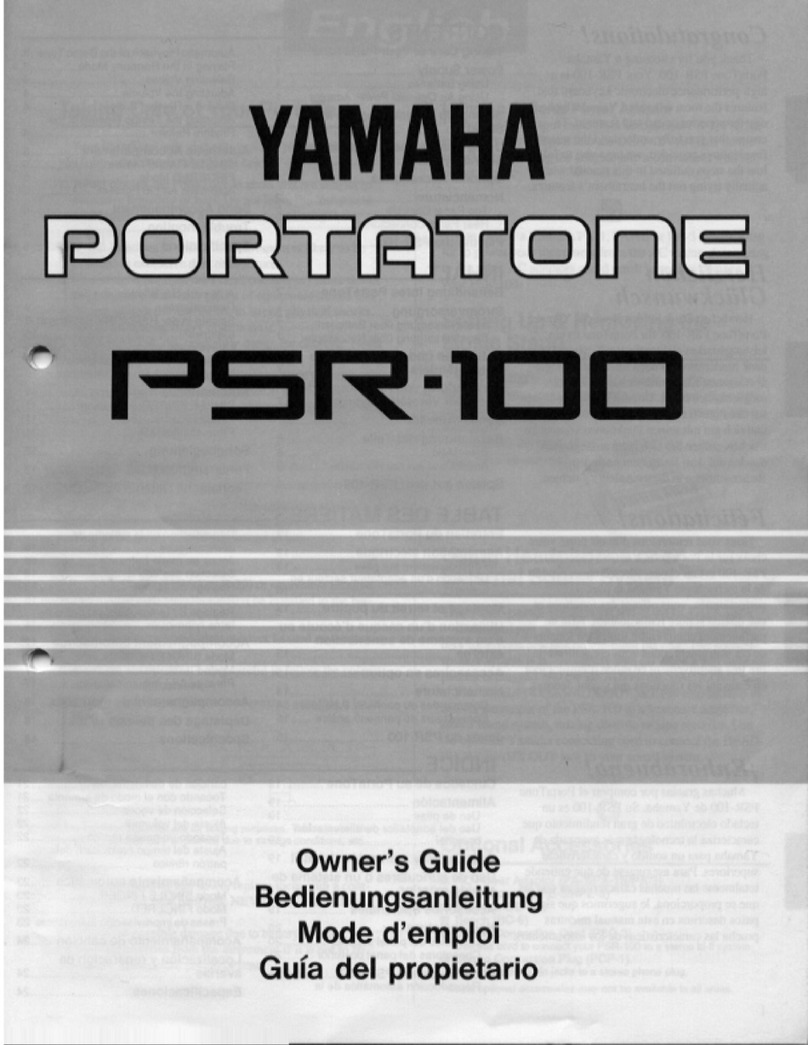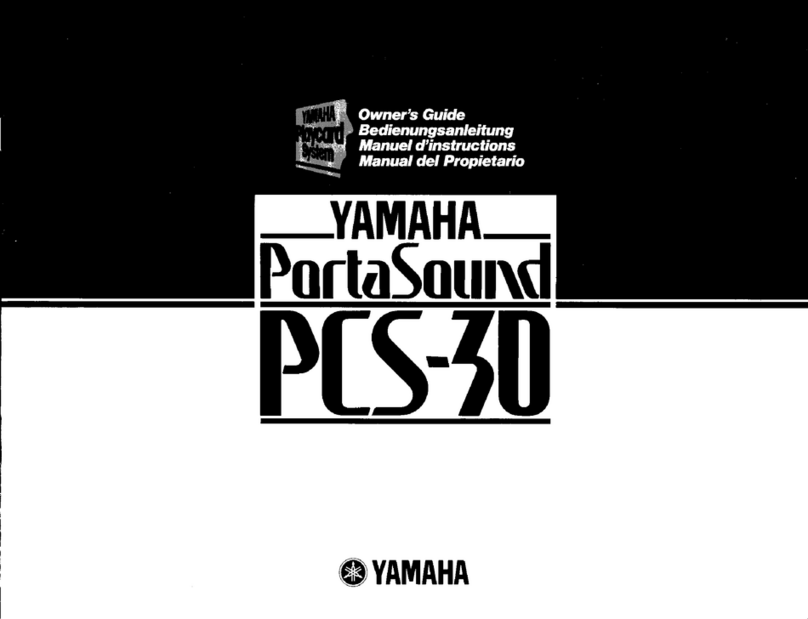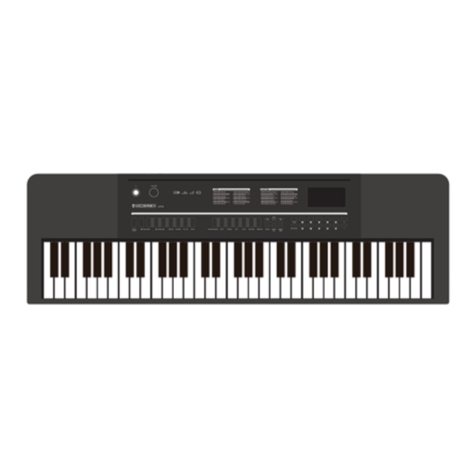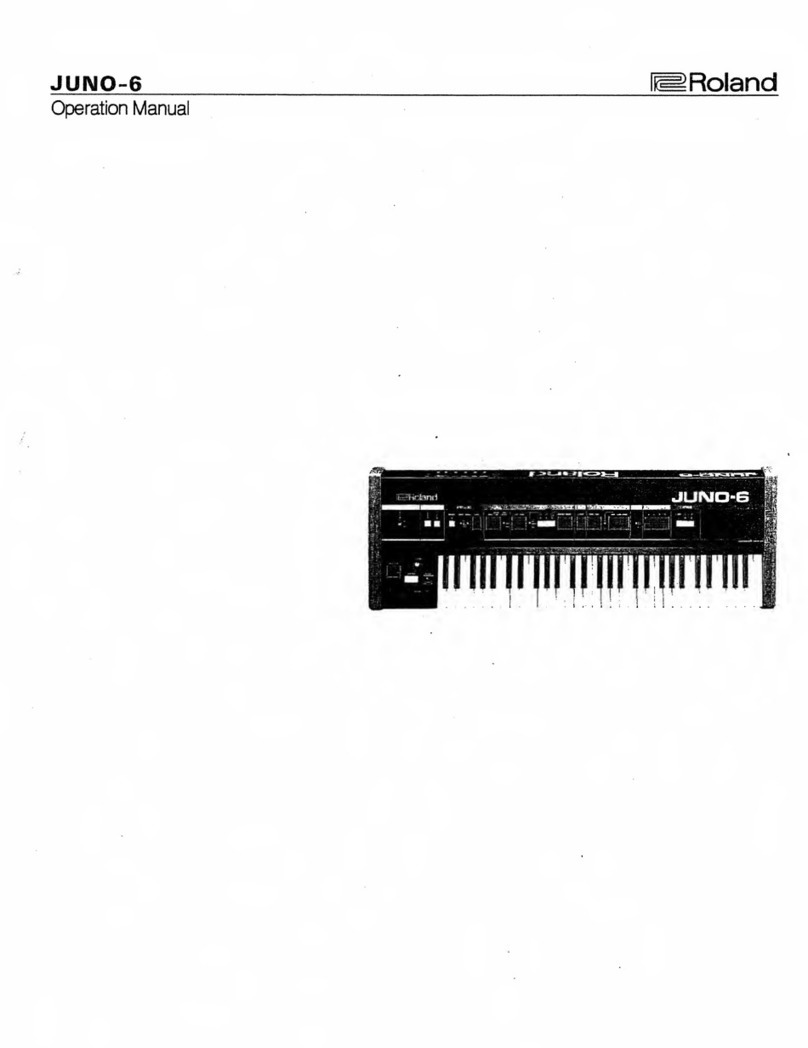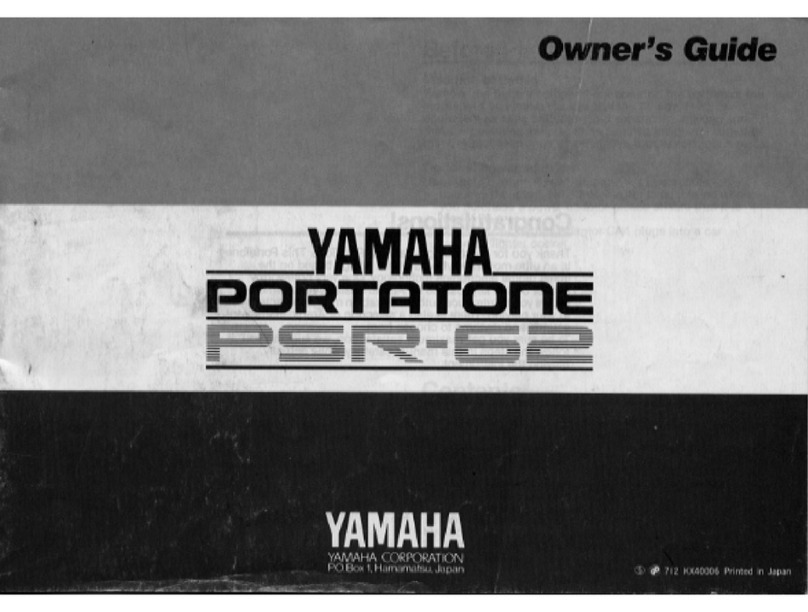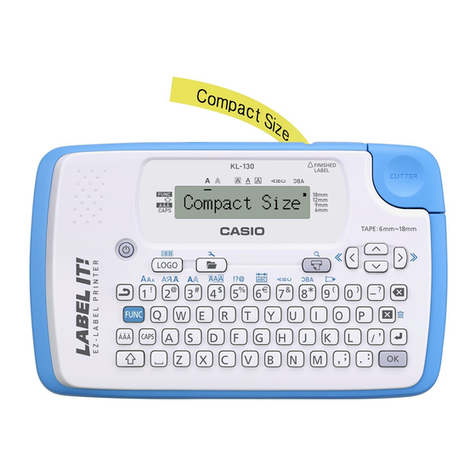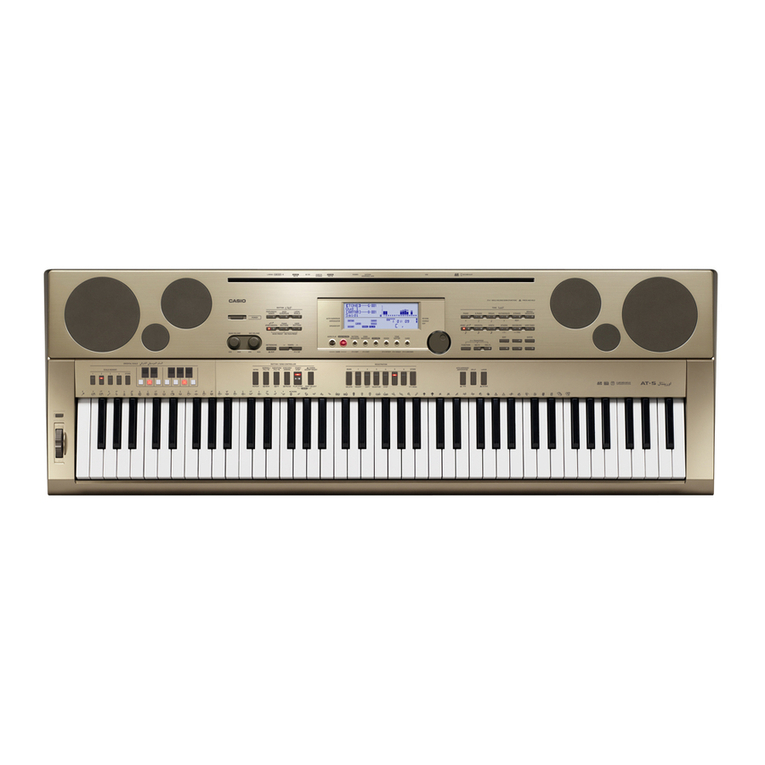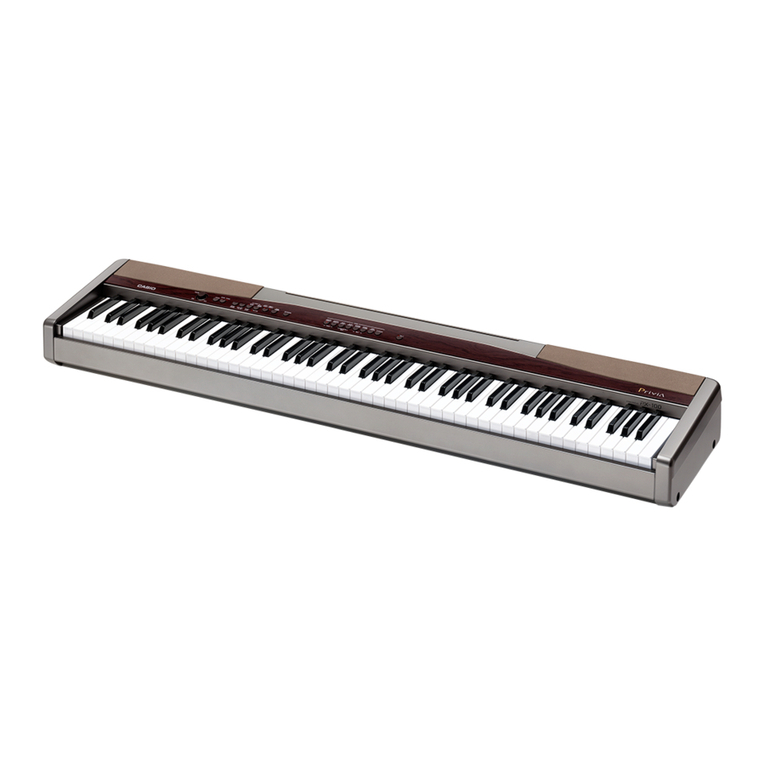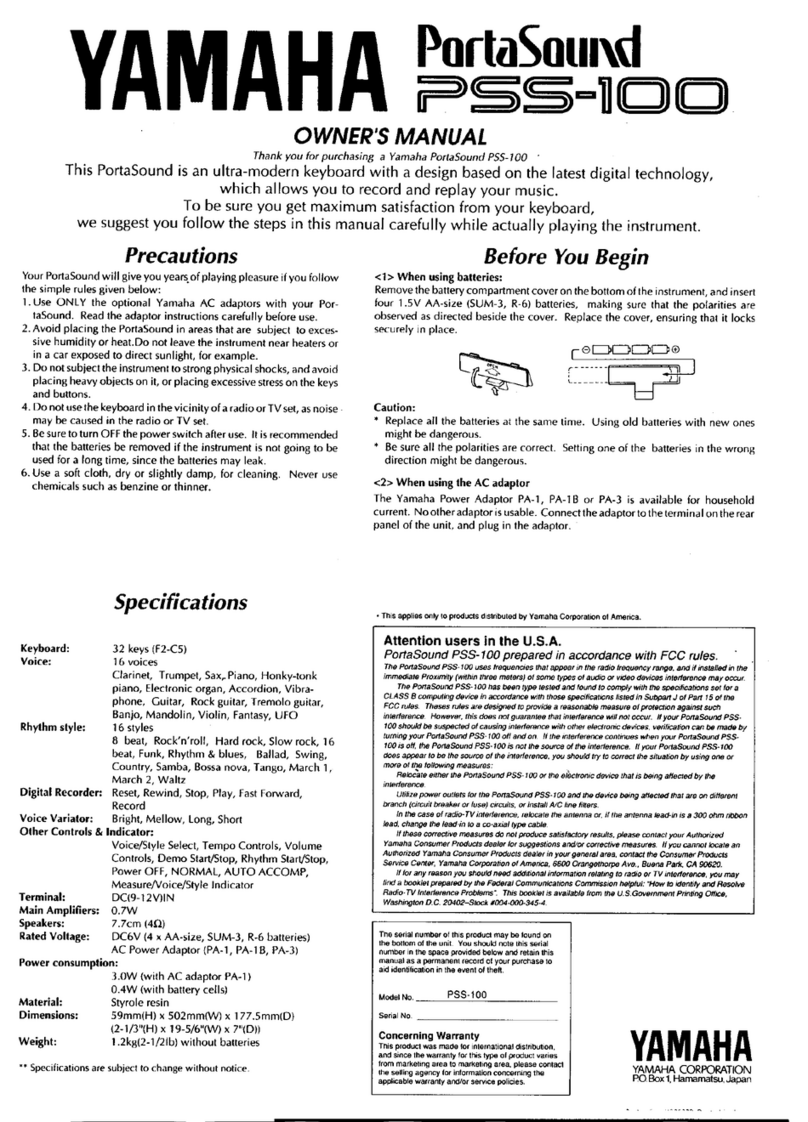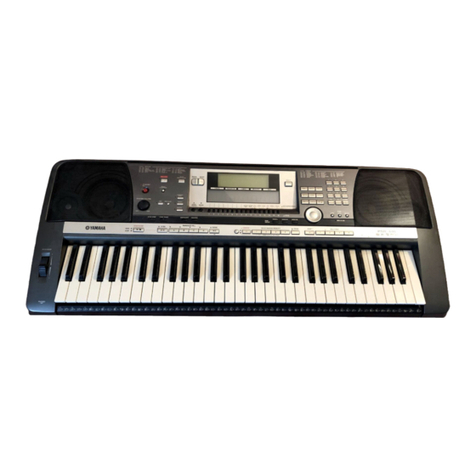5
REAR PANEL OVERVIEW
1. DC POWER ADAPTER INPUT – Plug in a 6V-1A DC
power adapter if you do not wish to power the
MPK61/MPK88 through the USB connection.
2. POWER ADAPTER RESTRAINT – You can secure
the power adapter cord to this restraint to prevent
accidental unplugging.
3. USB CONNECTION – Plug a standard USB cable
into this outlet and into the USB port of your
computer. The computer’s USB port will provide
power to the MPK61/MPK88. This connection is
used to send and receive MIDI data to and from your
computer and may also be used to send MIDI data
from your computer to a device attached to the MIDI
OUT port of the MPK61/MPK88.
4. MIDI OUT – Use a five-pin MIDI cable to connect the
MIDI OUT of the MPK61/MPK88 to the MIDI IN of an
external device.
123 667
8
54
5. MIDI IN – Use a five-pin MIDI cable to connect the
MIDI OUT of an external MIDI device to the MIDI IN
of the MPK61/MPK88.
6. FOOTSWITCH INPUT – Connect a ¼” TS footswitch
to this input.
7. EXPRESSION PEDAL INPUT – Connect a ¼” TRS
expression pedal to this input.
8. KENSINGTON LOCK SLOT – You may use this
Kensington lock slot to secure the MPK61/MPK88 to
a table or other surface.
678
99999
4
15 15 15
1619
25 26
15
1821 22 23 24
17 5
14
2
110
11
12
13
20
10
11
12
10
11
12
10
11
12
10
11
12
10
11
12
10
11
12
10
11
12
3
1. LCD – The display is used for navigating menus,
displaying data, and affecting change on
MPK61/MPK88’s options and parameters.
2. [VALUE] (Push to Enter) – This dial is used to
increment and decrement Presets, parameter values
and settings. This dial also functions as an [ENTER]
vbutton when it is pressed down.
3. [<] AND [>] BUTTONS – These buttons are used to
navigate through the fields of menus and options.
The [<] button also functions as a [CANCEL] button.
4. [PRESET] – This button calls up Preset Mode. You
can select and recall different Preset programs in this
mode.
5. [EDIT] – This button calls up Edit Mode, which allows
you to edit the behavior of the keyboard, pads,
knobs, buttons, sliders and default settings for each
preset.
6. [GLOBAL] – This button calls up Global Mode,
where MIDI reset commands and global system
preferences are set.
7. [PREVIEW] – This button allows you to see what
value will be sent by a controller, without actually
sending the value. This gives you precise control
over your parameters and helps avoid erroneous
controller data being sent to your devices due to the
physical position of the controller. This is especially
useful when switching between control banks where,
for example, the physical position of a slider may not
correspond to the last value sent by the controller.
Holding down [PREVIEW] allows you to view the
original value and adjust the physical position of the
slider as necessary before transmitting any values.
8. [PROGRAM CHANGE] – Pressing this button will
enter Program Change mode. In this mode, you can
send a Program Change or Program with Bank
Change message to a hardware or software module.
9. TRANSPORT CONTROL BUTTONS – These five
buttons are dedicated buttons for sending transport
control commands. The transport control buttons can
be set to transmit either MMC (MIDI Machine
Control), MMC/MIDI SysEx, MIDI START/STOP or
pre-assigned MIDI CC values.
10. 8 ASSIGNABLE KNOBS –Each 360-degree knob
can be used to send continuous control data to a
desktop audio workstation or external MIDI device.
11. 8 ASSIGNABLE SLIDERS – Each slider can be
used to send continuous control data to a desktop
audio workstation or external MIDI device.
12. 8 ASSIGNABLE BUTTONS – These buttons can be
used as MIDI CC switches or Program Change
switches. They can function in momentary or toggle
modes. When [TIME DIVISION] has been activated,
these 8 buttons are used to set the time division of
the Arpeggiator and Note Repeat features.
13. [CONTROL BANK] – The MPK61/MPK88 features 3
independent banks of continuous controllers.
Effectively, this allows you to control up to 72
independent parameters with the knobs, sliders and
buttons on the MPK61/MPK88. The [CONTROL
BANK] button is used to switch among the 3 banks.
The LEDs above the button will reflect the currently
selected control bank.
FRONT PANEL OVERVIEW
